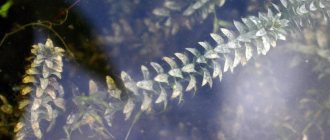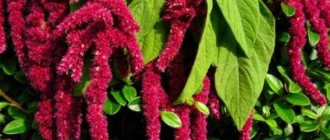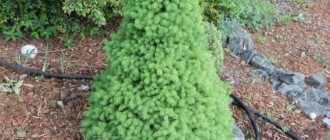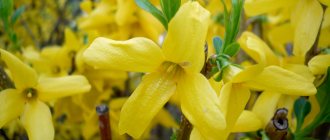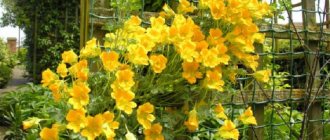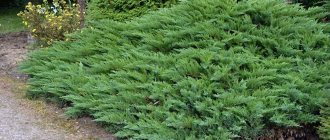Mosses, also known as bryophytes, are spore-bearing plants that have a stem and green leaves, but lack roots, a vascular system, flowers and seeds. Scientists, however, do not consider the organs of mosses to be real stems and leaves, but we will not go into scientific subtleties now.
Mosses are small plants. Most land mosses reach only a few centimeters in height. There are midgets that are five times smaller than a millimeter. But among aquatic mosses there are real giants with a meter-long stem. The modest size of mosses is probably due to the absence of a conducting system. Without it, how would they deliver water and nutrients to all ends of the large body?
Mosses have short, thread-like outgrowths on the lower part of their body. They resemble roots, but serve primarily to attach to the soil. And mosses absorb water over the entire surface of their body.
Sometimes the name moss is used to confuse different plants. For example, the well-known “reindeer moss” (moss) is not moss at all, but a plant from a completely different group, it is a lichen.
Description
Mosses often live in humid environments (swamps, forests), where they spread by spores. If such a plant consists of leaves and a stem, it is called deciduous. When there are no leaves and the body looks like a thallus, the moss is classified as a liver moss.
Since bryophytes do not have conductive tissue, they are not able to conduct liquid even over a short distance. That’s why all mosses are short (a few centimeters maximum). The root system of such plants is replaced by rhizoids - outgrowths of the epidermis that absorb water with nutrients and subsequently attach to the substrate.
Bryophytes have the ability to survive in unfavorable natural conditions. To do this, they go into suspended animation and can remain in this state for many years. In addition, mosses easily adapt to extremely low and high temperatures, but do not tolerate saline soils. Animals practically do not feed on such plants, so their decorative varieties are planted everywhere, including in gardens.
Interesting! On trees, mosses grow mainly on the north side. This is explained by the fact that there is more moisture there, which they need so much for full growth and development.
The favorite place for green moss to settle is a damp forest, where it can easily occupy vast territories, growing in a fluffy carpet. Source winterhouse.ru
How are mosses different from ferns?
Mosses cannot be confused with ferns because mosses:
- there are no real large leaves and long roots;
- specialized tissues are very poorly developed;
- cells spend most of their lives having a half, rather than a double, set of chromosomes;
- spores ripen not on the leaves, but in a capsule, which is connected to the stem by a stem;
- a branched thread grows from the spore, not a small plate;
In addition, mosses are not tree-like and appeared on the planet before ferns.
Main types
Today there are many varieties of bryophytes. Each of them has its own characteristics and grows in certain conditions. Among the common types it is worth noting the following:
- Fern. Dense, small in stature, prefers to grow in the shade, making it great for planting in the garden. The leaves of this plant resemble the greenery of a fern.
- Christmas. The name comes from the shape of the leaves, similar to spruce needles. This moss grows very slowly and requires a special temperature regime (not higher than 22 ° C).
- Key. Distributed throughout the globe, except Australia. The color of unpretentious plants depends on the quality of lighting: it can be reddish or deep green.
- Riccia. It has a round shape, it has no roots or stems. They are replaced by dense twigs. This species prefers to grow in overly moist and well-lit areas. The amount of incoming light affects the growth rate and shade of plants. They are usually bright green.
- Hypnotic. Lives on tree trunks or branches, pebbles, and ground. It is in great need of shade and is best suited for arranging paths located in the garden.
- Peat. Often found in wetlands, it comes in a huge variety of colors. It is used to maintain proper soil moisture in flowerpots and decorate garden ponds near the house.
- Weeping. The height of the plants does not exceed 50 cm, the branches resemble willow. The habitat of such moss is often driftwood and stones near the country garden. The recommended ambient temperature for it is less than 28 °C.
- Javanese. It does not require a special temperature regime; it thrives in shaded areas and near water bodies. The stems of this plant are intertwined.
The above-described bryophytes are used in various fields of human activity. Certain varieties of moss grow well at home and in garden areas and serve as an attractive decorative element.
Riccia moss grows in the shape of a ball, unlike other types of bryophytes it needs a lot of sunlight Source ydoo.info
Can moss be completely trusted to determine location?
Guiding the growth of bryophytes can be called effective. But this method is not suitable for all areas. So, in the central part of Russia and in the south, these plants really “hide” from sunlight. But in the northern forests they cover the entire surface of trees and stones. Therefore, there is a need to use other guidelines.
To be more confident, experts recommend checking the direction using other natural signs.
As you can see, you can determine the cardinal directions and get out of the forest without a compass or other instruments. Plants, berries, stones and even forest inhabitants will tell you where to go. It is enough to be attentive and learn to put into practice the information provided above.
What other ways to navigate in the forest do you know? Share your knowledge in the comments!
Features of cultivation
Growing moss at home is easy. This requires certain skills and knowledge. In addition, you will need any transparent container, kefir, and blender.
The process of growing bryophytes at home includes several stages. Before you begin, you should familiarize yourself with the following recommendations:
- On the eve of planting, the selected location must be cleared of leaves and debris.
- When preparing moss for planting, it is important to remember: the growing area must certainly resemble the previous habitat.
- The area for moss growth should be chosen in the shade so that constant exposure to the sun does not destroy it.
- Any moss grows well only in a humid and acidic environment.
Attention! When cutting bryophytes, you need to grab the underlying substrate. This will prevent accidental damage to the bottom of the material.
Forest moss should be collected for future planting on the site together with the surrounding soil Source flo.discus-club.ru
We store it correctly
The rules for storing moss depend primarily on how you plan to use it.
Do you need dry sphagnum moss used in medicine? Then the easiest way is to use a cord or strong thread and hang the stems in a thin layer in a warm place with good ventilation. Well, or at least spread it out on a towel or newspaper and leave it on a windowsill well lit by the sun. Stir the moss a couple of times a day to ensure it dries evenly. Otherwise, the top will dry out and form a crust. Inside, the stems will remain damp and over time, mold may appear here, making the use of moss for medical purposes impossible.
A completely different storage method should be chosen if your goal is to keep it alive for the longest possible period. Coping with this task is not at all difficult. Rinse the moss well, then place it in a paper or cloth bag and place it in the refrigerator or freezer. In such conditions, it can easily be preserved for several years. When you need sphagnum moss, simply remove it from the refrigerator and leave it in a warm, slightly humid place. After a few hours, the stems will thaw, and after a few days they will continue to grow as if nothing had happened. But here it is worth considering that the longer the sphagnum lies frozen, the fewer stems will remain alive. It is advisable to remove the rest as soon as it becomes clear that they are dead. This is not difficult to determine - they dry out quite quickly.
How to grow moss on a plot
Various bryophytes are often planted in home gardens, where they serve as original decorative decorations and additionally bring considerable benefits:
- relieve excessive moisture from overly moist areas;
- replace lawn on rocky soils.
Moss should be planted on the ground in the following order:
- Prepare the area: level, remove weeds.
- Determine soil pH. When the soil is acidic, it should be limed. If the acidity level of the soil is insufficient, it is recommended to add aluminum sulfate to it.
- Using a spray bottle, water the prepared “bed” generously.
- Divide a large plate of moss into pieces, which are then planted at some distance from one another.
Conditions for planting mosses in the garden
Despite their unpretentious nature, mosses (bryophytes) do not take root in all areas. Moisture and shade are important for their growth, while the scorching sun can dry them out. Still, you shouldn’t push them into permanent twilight, where the sun’s rays don’t reach; otherwise, the shade of the cover will be faded. The most suitable places for planting mosses are the northern or northeastern side of the garden area, under trees with not very dense foliage, as well as wetlands.
Another condition for the growth of bryophytes is oxidized soil (pH5/pH6). If such land is not suitable for higher plants, then it is an ideal option for protozoa. Almost all types of mosses can be planted on such soils, including cuckoo flax, trichium wavy, leukoborium glaucous, etc.
The variety of colors and structure of the cover allows you to create truly magical plant panels in the garden. An excellent addition to bryophytes will be shade-loving plants and flowers: lingonberries, strawberries, violets, ferns, and lichens.
Stabilized moss
Some varieties of bryophytes are used to implement modern design solutions. In addition, they are used to create attractive paintings, which are then hung on the walls. Such compositions look quite original. Decorative moss does not require moisture or other special care. Additionally, it has the following advantages:
- maintains an attractive appearance for a long time;
- sleepy moss does not grow, so there is no need for pruning;
- absolutely safe;
- does not require special lighting;
- is highly resistant to mold and fungi.
Coloring moss in different shades allows you to create original multi-colored compositions Source stroy-podskazka.ru
On an industrial scale, such a plant is harvested by hand so as not to disturb the ecosystem. Then it is cleared of grass and debris and subjected to stabilization. In other words, the moss is put into a dormant state. Subsequently, it retains its color and properties for a long time and completely stops growing. The process itself is as follows: a special solution containing glycerin is introduced into the bryophytes. As a result, decorative moss becomes very soft, elastic, and more attractive.
The natural moisture of stabilized moss is replaced by a glycerin-based solution, so biological processes inside the plant freeze Source botanicals.ru
Useful properties of cetraria (video)
Harvested raw materials can be stored for 2 years. But for this, you should take care of suitable conditions: the container must be tightly closed with a lid, and the air in the room must be kept dry and cool. If drops of moisture get on the moss, it will absorb it and deteriorate.
You can buy cetraria raw materials or extract in tablets in pharmacies or specialty stores. This natural and harmless plant helps combat many medications and combines well with other herbs used in folk medicine. But we must not forget about traditional treatment, following the recommendations of doctors. Icelandic moss will be a good assistant in basic therapy.
Where does moss grow and how to prepare it correctly
Sphagnum grows on the banks of reservoirs, in forests, and swampy lowlands. In such surroundings it is possible to find red, green, and brown plants. They can be harvested from early spring until the beginning of winter.
Moss is removed from its permanent habitat in this way: the curtain is slightly lifted, then the bottom layer is carefully cut off.
After collection, the workpiece is sorted, insects are removed from it, and then disinfected. To preserve such a plant in a green state for a long time, experts recommend keeping it (a quarter of an hour) in warm water at a temperature of about 45°C.
The collected moss should be stored at home in the refrigerator, first placed in plastic bags. The latter cannot be closed, otherwise the sphagnum will die.
It is necessary to harvest moss in the forest correctly so as not to harm the natural environment Source pics.botanichka.ru
Additional landmarks
Knowing which side of the tree is covered with lichens and mosses, you can only determine the direction approximately. This can be done more accurately using additional guidelines:
- You can determine the cardinal directions by looking at the bark of trees. On the south side it is lighter and drier, as it receives more light and heat.
- Secondary crust and amber-colored resin can also be seen on the south side.
- During rain, the secondary bark that forms on the shady side will swell and dry more slowly, due to its porous structure.
- Another effective way to navigate in the forest is by berries. They always ripen faster on the south side than on the north side.
- You can also pay attention to where squirrels build their hollows. These animals settle only in the opposite direction from the prevailing wind.
- Even from school, many people know how to navigate an anthill. It is known that ants build their anthills on the south side of tree trunks.
- In spring, you can determine the north by the melting of snow: on the southern side of ravines and mountain slopes the snow melts first.
Orientation by tree bark
Natural landmarks by resin on wood
Orientation by anthill in the forest
Orientation by berries
Method of orientation in squirrel hollows
Orientation by melting snow
There are many ways to navigate in the forest. You can choose the most suitable one from them, or better yet, use them all at once.


